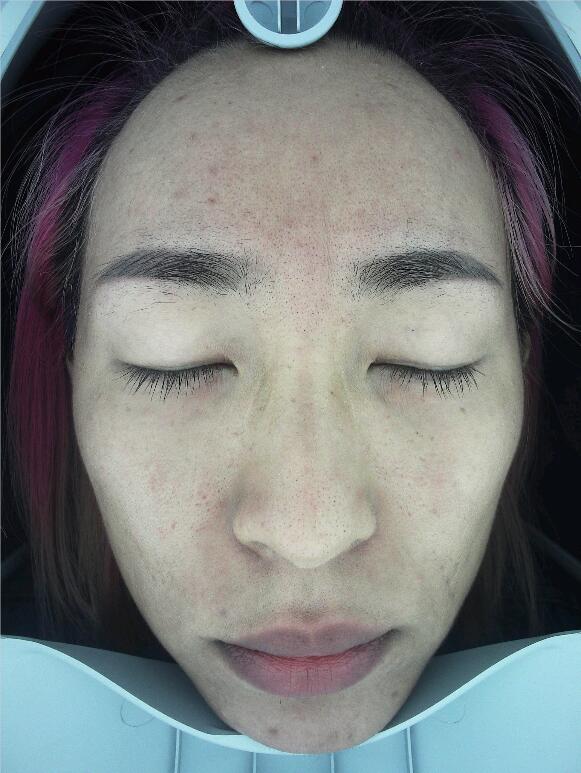DIFFERENT LIGHTS FOR DETECTING DIFFERENT SKIN PROBLEMS
The basic principle of the facial camera is to illuminate the skin through different spectrums and be imaged by the camera. Through the analysis of skin photos under different spectrums, it can provide us with more skin information. Many data are information that cannot be accurately obtained by the naked eye, but you must understand How we get this information requires basic optical principles, especially the relationship between light and skin.
RGB reflects objective skin problems visible to the naked eye, such as showing pores, stains, textures, etc.
- Uniform illumination
- Minimize reflected light

UV, ultraviolet light: The light in the UVA area is irradiated on the skin, and it is easily scattered or reflected by the skin, and the melanin of the skin epidermis and dermis and the collagen of the dermis can absorb the light wave of this wavelength and emit fluorescence to blue and white light. Mainly. The autofluorescence of normal skin tissue mainly depends on skin pigment content, elastic fiber, collagen and so on. Different tissues and different substances produce different fluorescence colors. For example, pigmentation (sunburn) makes the skin rich in melanin. When ultraviolet light is irradiated, most of the light is absorbed by the pigment, while the adjacent normal skin with less pigment content is mostly reflected, so at the junction of the two Form obvious chromatic aberrations and dividing lines. For example, Propionibacterium acnes can produce photosensitive substances (porphyrins) under ultraviolet light, emitting brick red fluorescence.

PL, polarized light: The role of polarization is to filter the reflected light, increase the imaging contrast, and can effectively reduce or eliminate the reflection of non-metallic surfaces, thereby improving the image quality of the subject and enhancing the clarity of the picture. For example, when we need to photograph an object inside a glass shop window, by using polarized light, the reflection on the surface of the window glass can be reduced, so that the object behind the window glass can be clearly photographed through the window glass.











